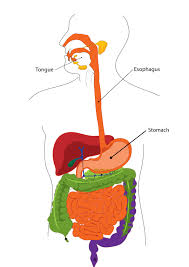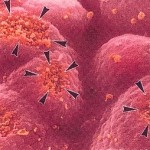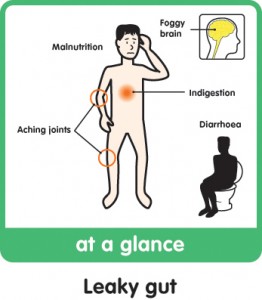After giving a general introduction to the sometimes shadowy world of symptoms for gluten sensitivity, you must certainly be asking yourself: So what is all this stuff about gluten? What does it actually do? Are other foods causing similar responses in my body?
Well, it’s all about the gut and the ripple effects of what is happening there that can cause either health and homeostasis (the proper balance mechanisms working in harmony) or various levels of disease (“dis-ease” = feeling not right, something wrong) and chaos in the balancing mechanisms.
Sit back and enjoy a brief lesson in anatomy and physiology:
The best way to go from point A to point B is a straight or smooth line if the function is, say, covering an organ or the body. Our skin is smooth; our heart, lungs, and intestines are covered with smooth tissue to protect and enhance their motile functioning. But if surface area is needed, say in our brain, a straight or smooth line of brain matter would not give us enough cerebral cortex or gray matter to have much tissue with which to think. Hense the wavy, folded surface of our brain which allows for increased surface area. Little known fact that could help you in a quiz show: if we could “iron out” the surface area of our brains, we would end up with the area of a pillow case! Now that’s brain power!
 Now consider the digestive system.
Now consider the digestive system.
Mouth: smooth with teeth and tongue for chewing and swallowing functions.
Throat and esophagus: smooth for transport of mushy swallowed food.
Stomach: smooth but folded to allow for stretching out and churning action of the now soup-constency food.
Small intestine where most of the absorption of nutrients occurs:

Not smooth. Much surface area is needed for exposing the soup-like foodstuffs to the intestinal wall. I have heard the small intestine described as a shag carpet surface. The shag carpet projections are called villi and the fuzzy parts of each villi are called microvilli. And this is where our focus will be today.
Gluten and other grains can effect a couple factors here. The shag carpet structures that need to be maintained for proper absorption of nutrients become damaged, bent, crushed even, rendering them useless in nutrient absorption. To keep the carpet analogy going, we now have Berber carpet.
And if that’s not disastrous enough, the integrity of the junctions holding the individual cells of the small intestine together is compromised and the intestine becomes “leaky”. This is where systemic inflammation and auto-immune issues start.
 Imagine molecules of protein escaping from being absorbed for use and, instead, are floating around and being seen as foreign invaders. Our bodies will naturally mount an immune response which is what starts the inflammatory response I have mentioned before. Where ever this immune response happens is where trouble happens: pick an organ, any organ; pick a body system, any body system.
Imagine molecules of protein escaping from being absorbed for use and, instead, are floating around and being seen as foreign invaders. Our bodies will naturally mount an immune response which is what starts the inflammatory response I have mentioned before. Where ever this immune response happens is where trouble happens: pick an organ, any organ; pick a body system, any body system.
Researchers are saying more and more that the bedrock of most all disease is auto-immune in nature. The gluten found in wheat, barley, and rye (and the lectin found in other grains) are what serve as a launching pad for auto-immune and inflammatory diseases. This is why the signs and symptoms of any level of gluten sensitivity are so broad.
To quote Dr. Tom O’Bryan’s article, “The Gut-Disease Connection” from May 8, 2014, in “Dr. Allessio Fasano’s “Leaky Gut Theory of Autoimmunity” he found that the 1st step in the development of autoimmune disease is leaky gut…and in the event we can reverse the leaky gut, the possibility of shutting off the autoimmune response becomes real.”
There are Celiacs who have no digestive issues; there are non-Celiacs who have plenty of digestive issues. I have read recent articles stating that there are some on the gluten sensitivity spectrum who are only reactive to wheat.
So what is one to do? Give being gluten free a real try for 30-60 ![]() days. If your symptoms improve, great. If you improve somewhat but still have some level of “dis-ease”, then expand your eliminations to include all grains (rice, corn, oats, etc.). Then, once you are normalized, try reintroducing non-wheat grains one at a time and note your body response. Everyone is unique; maybe you can eat a bowl of oatmeal or a serving of rice.
days. If your symptoms improve, great. If you improve somewhat but still have some level of “dis-ease”, then expand your eliminations to include all grains (rice, corn, oats, etc.). Then, once you are normalized, try reintroducing non-wheat grains one at a time and note your body response. Everyone is unique; maybe you can eat a bowl of oatmeal or a serving of rice.
Today’s Sign Post= check out radicatamedicine.com for more information about gluten and gluten-free eating.
Other grains and gluten-containing grains contain lectins and phytates which also disrupt proper nutrient absorption; they will be discussed in a future post.
Thanks!
Deidre
Disclaimer:
The information being discussed in these blogs is NOT intended to replace a relationship with a qualified health care professional. Foodtalk4you blogs endeavor to empower people through the exploration of publicly available resources of information about human anatomy and physiology, and how different foods affect the human body. Readers should seek the advice of their qualified health care providers with any questions about their medical conditions or health status before attempting any dietary, exercise, or lifestyle changes.

